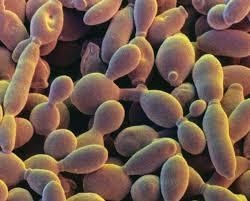Yeast Infection

Yeast Infection - Vaginal
Introduction
Vaginal yeast infections are common. They most frequently result from the overgrowth of a fungal organism. Common symptoms include itching, irritation, abnormal discharge, and painful urination. Yeast infections are treated with over-the-counter or prescription medications.
Anatomy
The vagina normally contains a balanced amount of organisms, including Candida albicans, the fungus that causes most yeast infections.
Causes
Yeast infections develop because of changes in the normal balance of organisms in the vagina. Hormonal changes from pregnancy, birth control pills, or menopause can contribute to yeast infections. Uncontrolled diabetes can cause yeast infections. Yeast infections are common for people with HIV or AIDS. Certain antibiotics or steroid medications can lead to infections. Bubble baths, vaginal contraceptives, damp or tight clothes, and feminine hygiene products do not directly cause yeast infections, but they may create an environment that is favorable for infection.
Symptoms
Yeast infections can cause vaginal and external genital itching and irritation. Your genital area may be red and inflamed. You may experience pain during urination or sexual intercourse. Your vaginal discharge may change in color, appearance, odor, or amount. Vaginal discharge may appear slightly watery or thick white and chunky (cottage cheese appearance). You may have light vaginal bleeding.
Diagnosis
Your first yeast infection, recurrent yeast infections, or symptoms that do not respond to over-the-counter yeast infection medications should brought to the attention of your doctor. You should contact your doctor if you are not sure if your symptoms are related to a yeast infection or not. Other types of vaginal infections may cause similar symptoms and need to be treated as well. Your doctor will examine your cervix, vagina, and external genital area. Your doctor will confirm the presence of yeast cells and rule out other types of infections by viewing a sample of your vaginal discharge with a microscope.
Treatment
Yeast infections may be treated with over-the-counter vaginal medication. Your doctor may prescribe pills or vaginal medication. Your symptoms should go away with treatment. Some yeast infections may recur or require a different type of medication than what you used. You should contact your doctor if your symptoms return or do not go away.
Prevention
Adding cranberry juice and yogurt that contains live lactobacillus cultures, a “good” bacterium, to your diet may help prevent yeast infections. You should avoid wearing wet swimsuits or exercise clothing for long periods of time. Wash and dry your sportswear in between uses. Do not wear underwear while you sleep; yeast thrives in a warm moist environment. Wearing dry cotton underwear, loose fitting pants, and panty hose with a cotton crotch may help prevent vaginal yeast infections as well.
Am I at Risk
If you use birth control pills or are experiencing menopause, your risk is increased. Yeast infections are common during pregnancy. You may develop a yeast infection after taking certain antibiotics or steroid medications. You may be at risk for yeast infections if you have uncontrolled diabetes, HIV, or AIDS.
Complications
In some cases, chronic or recurrent yeast infections may occur. You should contact your doctor if this happens to you. A yeast infection is not classified as a sexually transmitted disease. Although it is not common, a yeast infection can be spread to your partner during sexual activity. Your partner should be treated if symptoms occur.